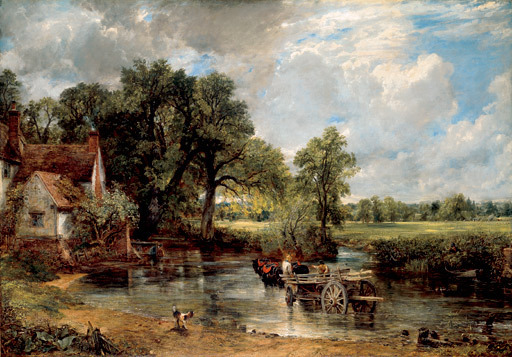A Brief Ode to John Constable
- Olivia Rao
- Aug 2, 2017
- 2 min read
I don't believe that any artist speaks to my soul in the way that John Constable does. When Michele wrote about Constable a few months ago, she said that he was one of my favorite Romantic era painters – I think I'll modify that statement to say that he is my favorite painter of all time. Michele can testify to the fact that it was very difficult for her to tear me away from his White Horse when we visited the Frick Museum together, this past June.
Constable is best known for his beautiful, idyllic, textbook-romantic landscapes: Wivenhoe Park, 1816; The White Horse, 1819; The Haywain, 1821. But although his landscapes are idyllic, they are not idealized. That is, he painted nature beautifully but did not embellish it. He found beautiful things to paint, and he did them justice, without exaggeration.
There was more realism in Constable's romanticism than one would expect. Constable would spend long periods of time outdoors, studying nature intensely and scientifically. He would make rapid en plein air sketches which he would label meticulously with the date, the time, wind, weather conditions, etc, in order to best understand the sky. He would then use these outdoor sketches as "notes" upon which he would base later, more complete paintings.
Constable saw beauty everywhere in the world around him and tried to capture it as perfectly as possible. "There is nothing ugly," he said. "I never saw an ugly thing in my life: for let the form of an object be what it may, – light, shade, and perspective will always make it beautiful."
Perhaps it is Constable's realistic approach to nature scenes that makes them so beautiful to me. His landscapes are neither dull nor melodramatic; they have a subtle tranquillity in them which is only enhanced when one understands that they are real. They are beautiful and delicate, but they are not ethereal – there is nothing about them which would make one think that they are fanciful and not-of-this-world. There is even something nostalgic and familiar about them which makes me think that I must have seen them before, somewhere, in real life.
I would venture to say that everyone – even those who are not art enthusiasts – has at some point seen a painting that he wished he could jump into it and live in for a little while. In my experience, that painting is always by John Constable.
Painting is a science and should be pursued as an inquiry into the laws of nature. Why, then, may not a landscape be considered as a branch of natural philosophy, of which pictures are but experiments? (John Constable)













Comments